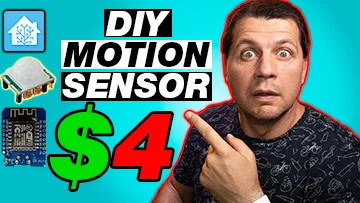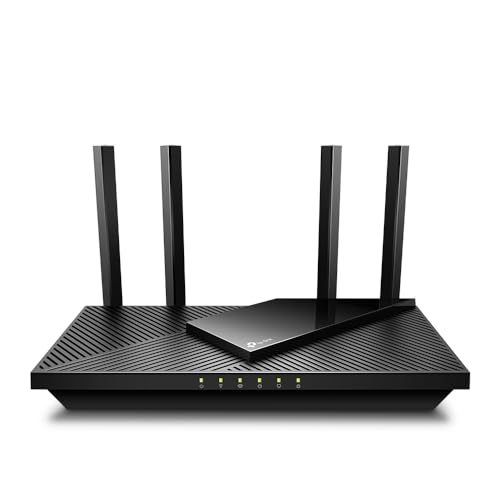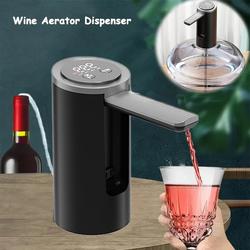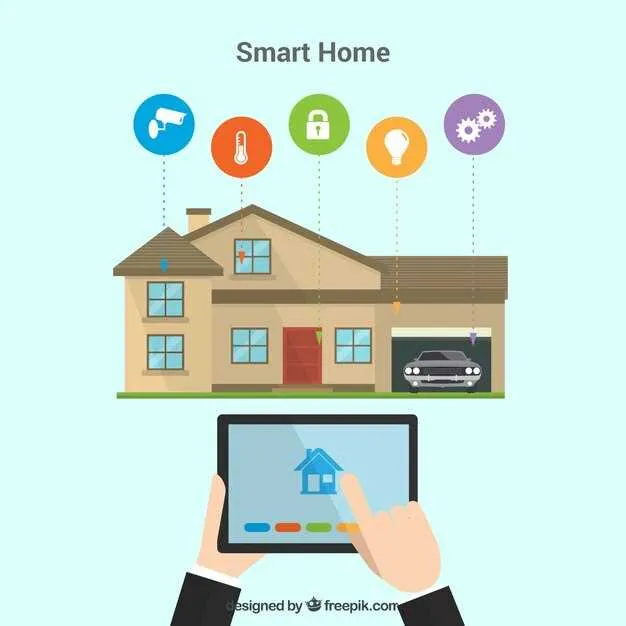Are you looking to make your home smarter and more secure without spending a fortune? Buying DIY smart motion sensors could be the perfect solution for you.
These easy-to-install devices not only help you monitor movement but also save energy and add convenience to your daily life. Imagine controlling lights, alarms, and cameras right from your phone, all set up by you in minutes. Keep reading to discover how you can choose the best DIY smart motion sensors and transform your space effortlessly.

Credit: www.reddit.com
Benefits Of Smart Motion Sensors
Smart motion sensors detect movement and send alerts or trigger actions. They help make homes safer and more efficient.
These sensors work with smart home systems to improve daily life and save energy.
Enhancing Home Security
Smart motion sensors spot unusual movement in and around your home. They alert you or activate alarms quickly.
This early warning helps prevent break-ins and keeps your family safe.
- Detects motion at doors and windows
- Triggers lights or alarms to scare off intruders
- Sends instant alerts to your phone
Energy Efficiency Improvements
Smart motion sensors save energy by turning off lights when rooms are empty. This reduces electricity bills.
They also help control heating and cooling systems to avoid wasting power.
- Automatically switches off unused lights
- Adjusts heating or air conditioning based on room use
- Reduces overall energy consumption
Convenience And Automation
Smart motion sensors add convenience by automating home tasks. Lights and devices work without manual control.
They make daily routines easier and help create a comfortable living space.
- Turns on lights when you enter a room
- Activates smart devices automatically
- Works with voice assistants for hands-free control
Types Of Diy Motion Sensors
DIY motion sensors help detect movement in homes or offices. They improve security and save energy.
There are different types of motion sensors. Each type works in a unique way.
Passive Infrared Sensors
Passive Infrared (PIR) sensors detect heat from people or animals. They sense changes in infrared light in their view.
PIR sensors do not emit any signals. They only receive infrared radiation from objects.
- Good for indoor and outdoor use
- Low power consumption
- Works best in warm environments
Ultrasonic Sensors
Ultrasonic sensors use sound waves to detect movement. They send out high-frequency sounds and listen for echoes.
When something moves, it changes the echo pattern. The sensor notices this change and triggers a response.
- Can detect motion behind objects
- Works well in dark areas
- Consumes moderate power
Microwave Sensors
Microwave sensors send microwave signals and detect their reflection. They sense movement by measuring signal changes.
These sensors cover larger areas and can detect motion through walls or doors.
- Long detection range
- Works in all weather conditions
- Uses more power than PIR sensors
Key Features To Consider
Buying a DIY smart motion sensor needs some thought. You want to get one that works well with your needs and devices.
These sensors come with different features. Knowing what to look for helps you pick the right one.
Detection Range And Angle
The detection range tells you how far the sensor can spot motion. The angle shows how wide the sensor can see.
Choose a sensor with a range and angle that fit your space. A small room needs less range than a big room.
- Longer range covers bigger areas
- Wider angle detects motion from more directions
- Adjustable settings allow better control
Compatibility With Smart Devices
Check if the sensor works with your smart home system. It should connect easily to your phone or hub.
Look for support for popular platforms like Alexa, Google Home, or Apple HomeKit. This makes control simple.
- Works with your current devices
- Easy app control on phones or tablets
- Supports voice commands if needed
Power Source Options
Motion sensors can use batteries, USB power, or wiring. Pick what fits your setup best.
Battery-powered sensors are easy to place but need battery changes. Wired sensors need installation but run without interruption.
- Battery: Portable and easy to install
- USB: Requires outlet but stable power
- Wired: Best for permanent setups

Credit: kmccberwick.ca
Step-by-step Installation Guide
Installing a DIY smart motion sensor is simple and quick. Follow these clear steps to set up your sensor correctly.
Good installation helps your sensor work well and keeps your home safe. Let’s start with the right location.
Choosing The Right Location
Pick a spot where the sensor can detect motion easily. Avoid places with direct sunlight or heat sources.
Check the sensor’s range and angle to cover the area you want to monitor.
- Place near entry doors or hallways
- Keep away from vents and windows
- Mount at a height of 6 to 8 feet
Mounting The Sensor
Use the mounting hardware that comes with your sensor. Clean the surface before attaching the sensor.
Secure the sensor firmly so it does not move or fall. Adjust the angle to cover the needed area.
- Use screws or adhesive strips
- Check that the sensor is stable
- Adjust the sensor angle for best coverage
Connecting To Your Smart Hub
Turn on your smart hub and open its app. Follow the app instructions to add a new device.
Put your sensor in pairing mode. The app will find and connect to the sensor automatically.
- Open smart hub app
- Select add new device
- Activate sensor pairing mode
- Confirm connection in the app
Popular Brands And Models
Smart motion sensors help make homes safer and smarter. Many brands offer sensors with different features. Picking the right brand and model can save money and improve home security.
This guide covers popular brands and models for DIY smart motion sensors. You will find options for all budgets and needs.
Budget-friendly Options
Budget-friendly sensors provide basic motion detection. They work well for simple home setups. These sensors are easy to install and use less power.
- Wyze Motion Sensor – Affordable and reliable
- Sonoff SNZB-03 – Good for Zigbee networks
- TP-Link Kasa Motion Sensor – Simple and effective
Premium Sensors With Advanced Features
Premium sensors include extra features like pet immunity and adjustable sensitivity. They often connect with smart home systems easily. These sensors offer better range and accuracy.
- Philips Hue Motion Sensor – Works with Hue lights
- Ecobee SmartSensor – Includes temperature sensing
- Ring Motion Detector – Integrates with Ring security
User Reviews And Ratings
Users value sensors that are easy to install and reliable. Battery life and sensor accuracy are common review topics. Good customer support is also important.
- Wyze sensors have high marks for price and function
- Philips Hue sensors get praise for smart home integration
- Some users report false alarms on cheaper models
- Ecobee sensors receive positive feedback for accuracy
Common Troubleshooting Tips
Buying DIY smart motion sensors can make your home smarter. Sometimes, these sensors may not work as expected. Troubleshooting helps fix common problems quickly.
This guide covers common issues with motion sensors. It explains how to solve detection, connection, and power problems.
Sensor Not Detecting Motion
Sometimes, the sensor does not detect motion even if someone moves nearby. This can happen if the sensor is blocked or placed incorrectly.
Check the sensor’s position and clear any objects in front of it. Make sure it faces the area where motion happens.
- Clean the sensor lens to remove dust.
- Avoid placing sensors behind glass or metal.
- Keep the sensor at the right height (usually 6 to 8 feet).
- Test motion in different angles to find the best spot.
Connectivity Issues
Smart motion sensors often connect to Wi-Fi or a smart hub. Connection problems stop the sensor from sending alerts or working with apps.
Check your network and device settings. Restart the router and the sensor to reset connections.
- Ensure the sensor is within Wi-Fi range.
- Use the correct Wi-Fi password and network.
- Check if the router blocks new devices.
- Update the sensor’s firmware for better compatibility.
Battery And Power Problems
Low battery or power issues can make the sensor stop working or send false alerts. Always check the battery status regularly.
Replace batteries with the right type and avoid mixing old and new batteries. If the sensor uses rechargeable batteries, charge them fully.
- Use fresh batteries recommended by the manufacturer.
- Remove batteries if you won’t use the sensor for a long time.
- Check battery contacts for dirt or corrosion.
- Test the sensor after replacing batteries to confirm it works.
Expanding Your Home Automation
DIY smart motion sensors add new features to your home system. They detect movement and trigger smart devices.
These sensors help automate tasks and improve home safety. You can link them to lights, cameras, and alerts.
Integrating With Lighting Systems
Smart motion sensors turn lights on when you enter a room. This saves energy by using light only when needed.
You can set sensors to control indoor or outdoor lights. Adjust brightness or color based on motion or time of day.
- Hallway lights turn on at night
- Porch lights activate when you approach
- Living room lights adjust to your presence
Linking To Security Cameras
Connecting motion sensors with cameras helps monitor your home better. Sensors start recording when they detect motion.
This setup saves camera storage and power. It also lets you see live video only when needed.
- Record only when movement is detected
- Get real-time video alerts on your phone
- Improve security with motion-triggered recording
Setting Up Automated Alerts
Smart sensors can send alerts when they detect motion. These alerts keep you informed about activity at home.
You can customize alerts for different events. Choose to get notifications via app, email, or text message.
- Receive alerts for unexpected movement
- Set alerts for specific times or zones
- Use alerts to check home remotely

Credit: www.amazon.de
Frequently Asked Questions
What Are Diy Smart Motion Sensors?
DIY smart motion sensors are easy-to-install devices that detect movement. They connect to your smart home system for automation and security. These sensors save energy by activating lights or alarms only when motion is detected. They are affordable and customizable for various home needs.
How Do Diy Smart Motion Sensors Work?
These sensors use infrared technology to detect body heat and movement. When motion is sensed, they send signals to smart devices or apps. This triggers actions like turning on lights or sending alerts. Their wireless design allows flexible placement without complex wiring.
Are Diy Smart Motion Sensors Compatible With Smart Homes?
Yes, most DIY smart motion sensors support popular smart home platforms like Alexa, Google Home, and Apple HomeKit. They easily integrate through Wi-Fi or Zigbee protocols. This compatibility enables seamless automation and control via smartphones or voice commands.
Can Diy Smart Motion Sensors Improve Home Security?
Absolutely. These sensors alert homeowners of unexpected movement, deterring intruders. They can trigger alarms, lights, or notifications instantly. Their quick response enhances safety and gives peace of mind. Integration with cameras increases security effectiveness.
Conclusion
Smart motion sensors make life easier and safer. They offer convenience and security. Installing them is simple and cost-effective. You can monitor your home from anywhere. Alerts keep you informed. Easy to integrate with smart home systems. Choose sensors that fit your needs.
Consider factors like range and battery life. DIY options provide flexibility and control. Enjoy the benefits of smart technology. Embrace the future of home automation today. Feel secure and in control. Make your home smarter with motion sensors. It’s a smart choice for peace of mind.
19 min read







